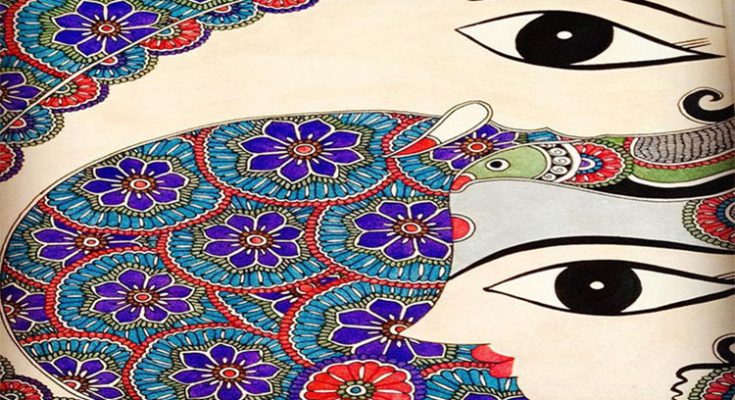The Techniques and Colours Used In Madhubani Paintings
"Madhubani"
Madhubani or Mithila painting have their roots, as the name suggests, in the Madhubani and Mithila regions in Bihar. It is a traditional folk art form that has successfully carved a place for itself not only in Indian art culture but also on an international level. These paintings are done on various mediums such as cloth, hand-made paper, and canvas; and the main themes contain images of Hindu deities such as Krishna, Ram, Shiva, Durga, Lakshmi, and Saraswati; besides including nature, too.
Moreover, Madhubani paintings beautifully depict celebrations for weddings. The main categories in Madhubani paintings are traditional, monochrome, tattoo, contemporary, animals, and birds. Also, vegetable colors are used in the making of natural resources. For instance, black is formed by blending soot and cow dung; yellow is made from turmeric, pollen, lime, milk of banyan leaves; blue from indigo; the red color is obtained from the Kusum flower juice or red sandalwood; green from wood apple tree leaves; white is made from rice powder and orange from Palasha flowers
Madhubani paintings are known for their distinct style of painting; as well as for their colorful and vividness in their description and appeal. A cordial element of the art form is that it is a very simple art form of painting, and one does not require any specialized knowledge but just a creative mind and artistic flair.
Madhubani paintings add a dash of vibrancy to the room and enhance its appeal when used as a home decor item. For instance, when it comes to interior wall decoration, you can go for this form of painting. While the art form traditionally uses basic colors like orange, green and red, you can add colors like pink, purple, blue to make it more attractive, while also choosing a design pattern that is simple and clear.
So learn to make Madhubani paintings and bring out your creativity!

